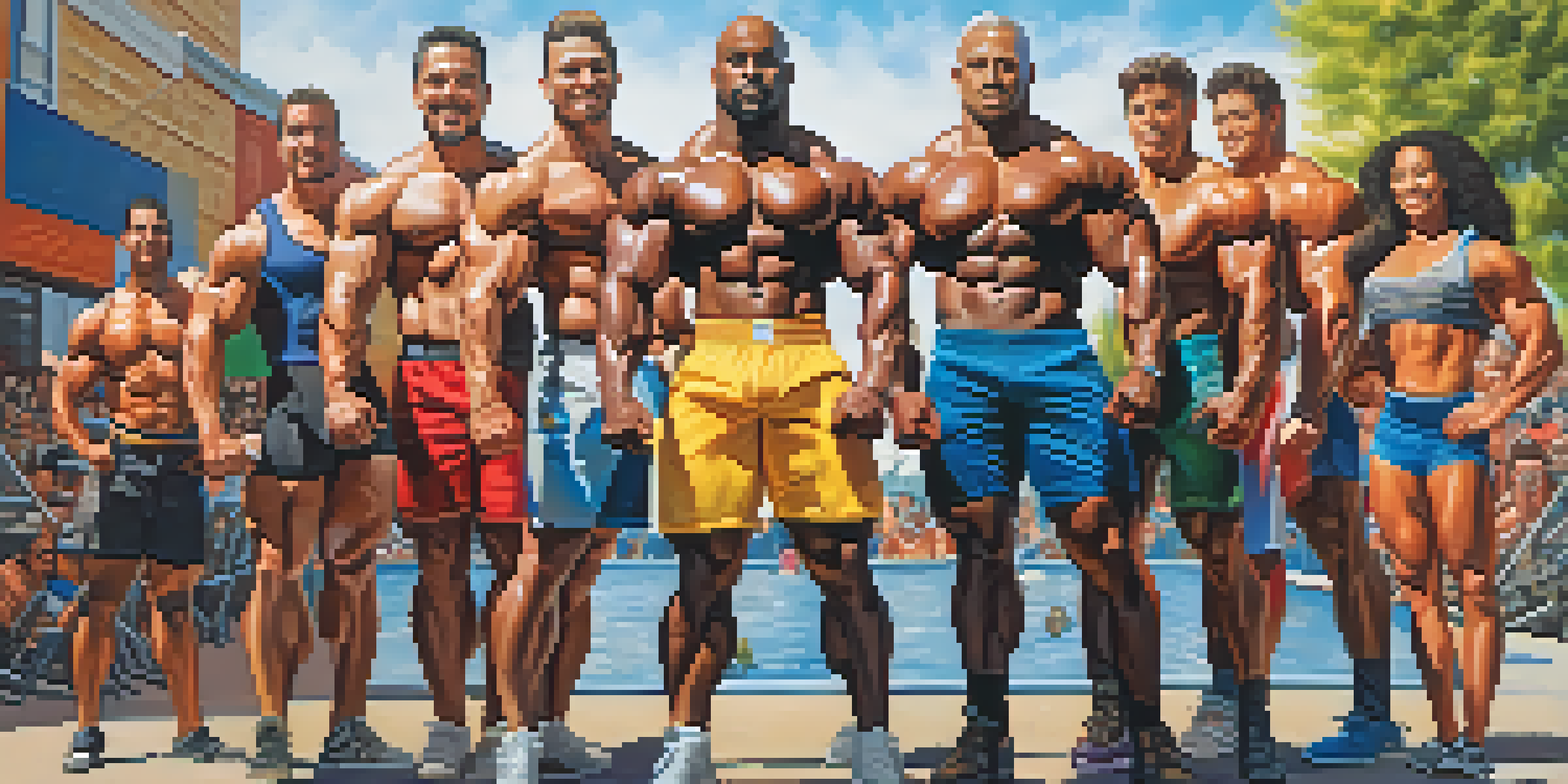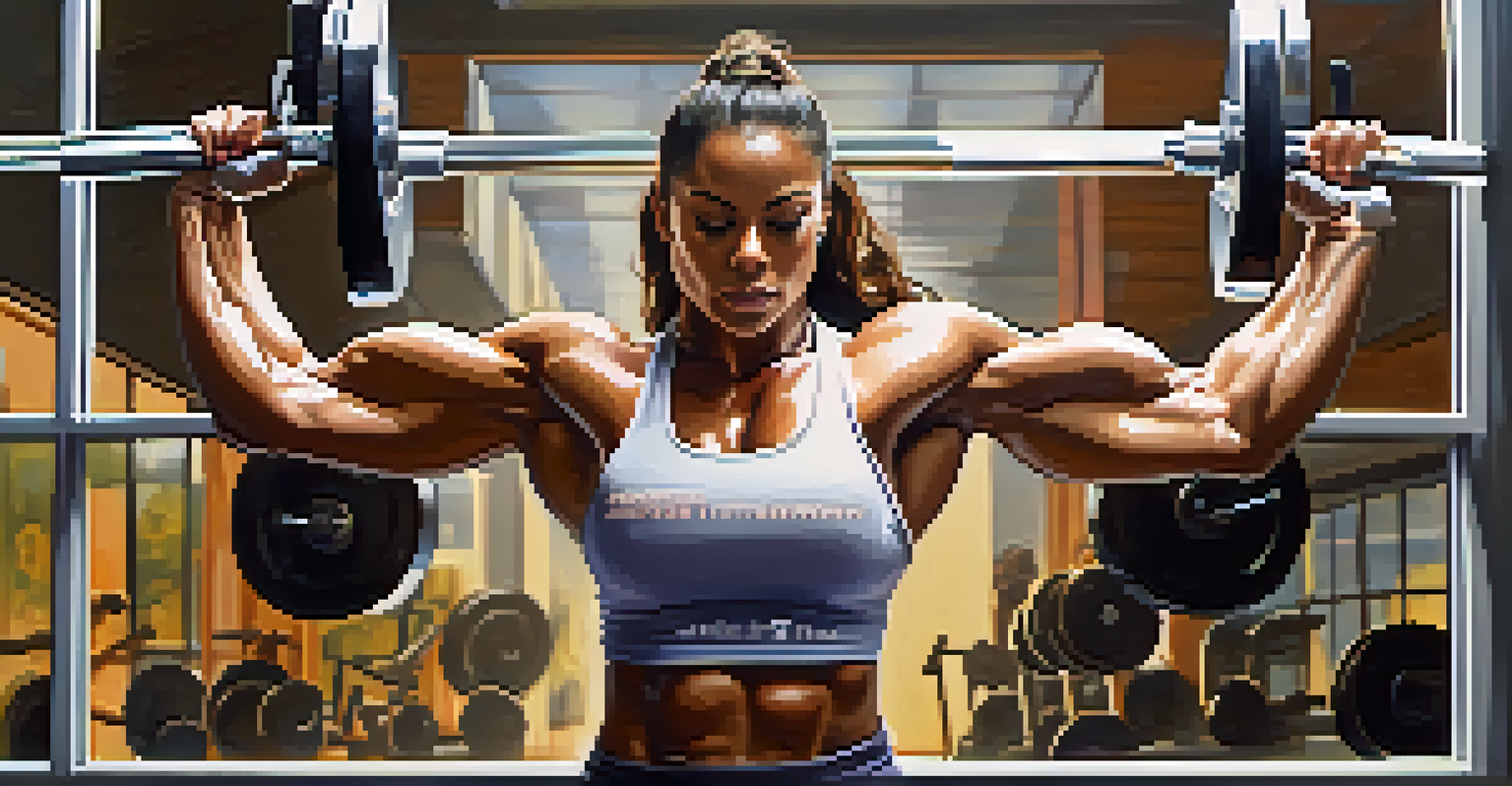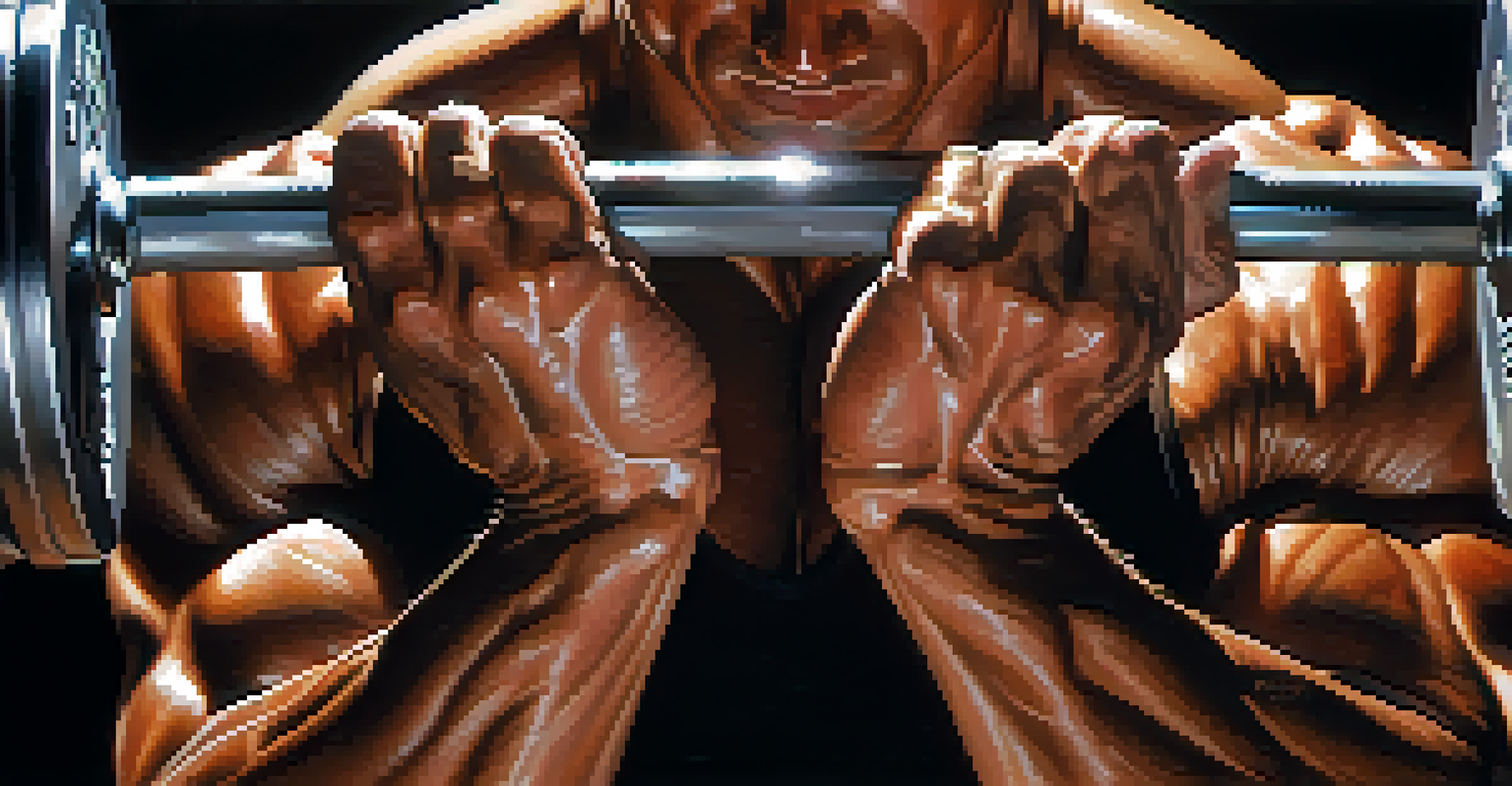Body Image Ideals: Cultural Perspectives on Bodybuilding

Understanding Body Image and Its Cultural Context
Body image refers to how individuals perceive their physical appearance, which can vary widely across cultures. This perception is influenced by societal norms, media representations, and personal experiences. For instance, in some cultures, a robust physique is celebrated, while in others, a leaner body type is preferred. Understanding these differences is essential in the context of bodybuilding, where physical appearance is paramount.
The body is a sacred garment. It serves as a means to express our identities and our cultures.
Cultural ideals surrounding body image can lead to both positive and negative outcomes. In cultures where muscularity symbolizes strength and success, individuals may feel empowered to engage in bodybuilding. Conversely, unrealistic body standards can lead to body dissatisfaction and unhealthy practices, such as extreme dieting or excessive exercise. These varying perspectives highlight the complexity of body image across different cultural landscapes.
Moreover, the globalization of media has influenced body image ideals, often leading to a homogenization of perceptions. This can create pressure to conform to a single standard, overshadowing diverse cultural beliefs. It's crucial to recognize and respect these cultural differences, as they play a significant role in shaping individuals' relationships with their bodies.
The Role of Media in Shaping Body Image Ideals
Media plays a powerful role in shaping our perceptions of the ideal body, particularly in bodybuilding. From magazines to social media, images of muscular physiques dominate the landscape, often setting unattainable standards. These representations can instill a desire to achieve a certain look, leading many to pursue bodybuilding as a means of self-improvement or acceptance. However, it's essential to consider how these ideals impact mental health and self-esteem.

In many cultures, the portrayal of bodybuilders in advertising reinforces the narrative that success and attractiveness are linked to physical appearance. For example, advertisements featuring chiseled bodies can create a sense of inadequacy among those who don’t fit this mold. This cycle can lead to a fixation on bodybuilding as a way to achieve societal approval, often at the expense of one’s well-being.
Cultural Influence on Body Image
Body image perceptions vary greatly across cultures, affecting how individuals engage with bodybuilding and their self-esteem.
On the flip side, there is a growing movement towards body positivity and diversity in media representations. Campaigns that celebrate various body types challenge the traditional ideals of bodybuilding. This shift encourages individuals to embrace their unique bodies, promoting a healthier relationship with self-image and encouraging diverse representations within the bodybuilding community.
Bodybuilding and Cultural Identity
Bodybuilding can serve as a means of expressing cultural identity, with different communities embracing unique approaches to the sport. For example, in some cultures, bodybuilding is intertwined with traditional practices, celebrating strength and endurance. This connection can foster a sense of belonging and pride among practitioners, reinforcing cultural values through physical expression.
Beauty begins the moment you decide to be yourself.
Moreover, bodybuilders often draw inspiration from their cultural backgrounds, incorporating traditional diets and training methods into their routines. This blend of modern bodybuilding techniques with cultural heritage can lead to more personalized and meaningful fitness journeys. It highlights how bodybuilding is not just a sport but also a reflection of individual and collective identities.
However, navigating cultural identity in bodybuilding can be complex. Individuals may experience pressure to conform to dominant body ideals while wanting to honor their cultural roots. This tension can lead to a rich dialogue about body image, encouraging athletes to redefine what strength and beauty mean within their cultural contexts.
The Impact of Gender on Body Image Ideals in Bodybuilding
Gender significantly influences body image ideals in bodybuilding, with distinct expectations placed on men and women. Traditionally, men have been encouraged to pursue muscularity as a symbol of power and virility, while women often face pressure to embody a more toned but less muscular physique. These differing standards can lead to unique challenges for each gender in their bodybuilding journeys.
For men, the pursuit of an ideal body can sometimes result in extreme training regimens and dietary restrictions, often fueled by societal expectations. The pressure to achieve a 'perfect' physique can lead to a cycle of dissatisfaction and risk-taking behaviors, such as steroid use. Understanding this dynamic is crucial for fostering healthier attitudes toward bodybuilding among men.
Media's Role in Body Ideals
Media representations can establish unrealistic body standards, impacting mental health and fueling the desire for an idealized physique.
On the other hand, women in bodybuilding often grapple with the challenge of being taken seriously in a male-dominated space. They may face criticism for challenging traditional feminine ideals by embracing muscularity. However, the rise of female bodybuilders who defy these norms is encouraging a broader acceptance of diverse body types, promoting a more inclusive definition of strength and beauty.
Regional Variations in Bodybuilding Ideals
Bodybuilding ideals can vary significantly from one region to another, shaped by cultural, historical, and social factors. In the United States, for example, the 'bigger is better' philosophy dominates, often glorifying mass and size. In contrast, some European cultures may place a higher value on aesthetics and symmetry, leading to different training focuses and competition standards.
These regional differences can also be seen in bodybuilding competitions, where judges evaluate physiques based on varying criteria. This can affect how athletes train and prepare for competitions, as they tailor their approaches to meet specific cultural expectations. Understanding these nuances is essential for anyone looking to compete internationally or connect with diverse bodybuilding communities.
Additionally, the rise of global fitness trends has led to a blending of these regional ideals. As information and training techniques circulate worldwide, athletes may adopt elements from different cultures, enriching their own practices. This cross-pollination fosters a sense of global community within bodybuilding, while still celebrating the unique characteristics of individual cultures.
The Psychological Effects of Body Image Ideals
The pursuit of bodybuilding ideals can have profound psychological effects on individuals. Many bodybuilders experience body dysmorphia, a condition where one perceives their body as flawed despite achieving significant physical changes. This psychological struggle can lead to dissatisfaction, anxiety, and even depression, highlighting the importance of addressing mental health alongside physical goals.
Moreover, the relentless pursuit of an ideal body can create an unhealthy cycle of self-criticism and validation through external appearances. Athletes may find themselves trapped in a mindset where their self-worth is tied solely to their physical appearance. This connection can erode self-esteem and lead to burnout, underscoring the need for a holistic approach to bodybuilding that values mental well-being.
Gender Dynamics in Bodybuilding
Gender expectations create distinct challenges in bodybuilding, with men and women facing different societal pressures related to their physical appearance.
Conversely, bodybuilding can also foster a positive self-image when approached with a balanced mindset. Many individuals find empowerment through their physical transformation and the discipline required in the sport. By focusing on personal growth rather than external validation, bodybuilders can cultivate a healthier relationship with their bodies and mental health.
Embracing Diversity in Bodybuilding Cultures
As bodybuilding continues to evolve, embracing diversity within the sport is becoming increasingly important. Recognizing and celebrating different body types, training methods, and cultural influences can enrich the bodybuilding community. This inclusivity allows individuals to express their identities fully and fosters a supportive environment for everyone.
Events that highlight diverse bodybuilding styles and cultures can help bridge gaps between different communities. For instance, competitions that celebrate various forms of strength and aesthetics can encourage a broader understanding of what it means to be a bodybuilder. This shift not only promotes inclusivity but also challenges the narrow definitions of beauty and strength prevalent in mainstream culture.

Ultimately, embracing diversity in bodybuilding can lead to a more holistic appreciation of the sport. By encouraging individuals to celebrate their unique journeys and backgrounds, the bodybuilding community can foster a culture of acceptance and positivity, paving the way for future generations to thrive in a supportive environment.